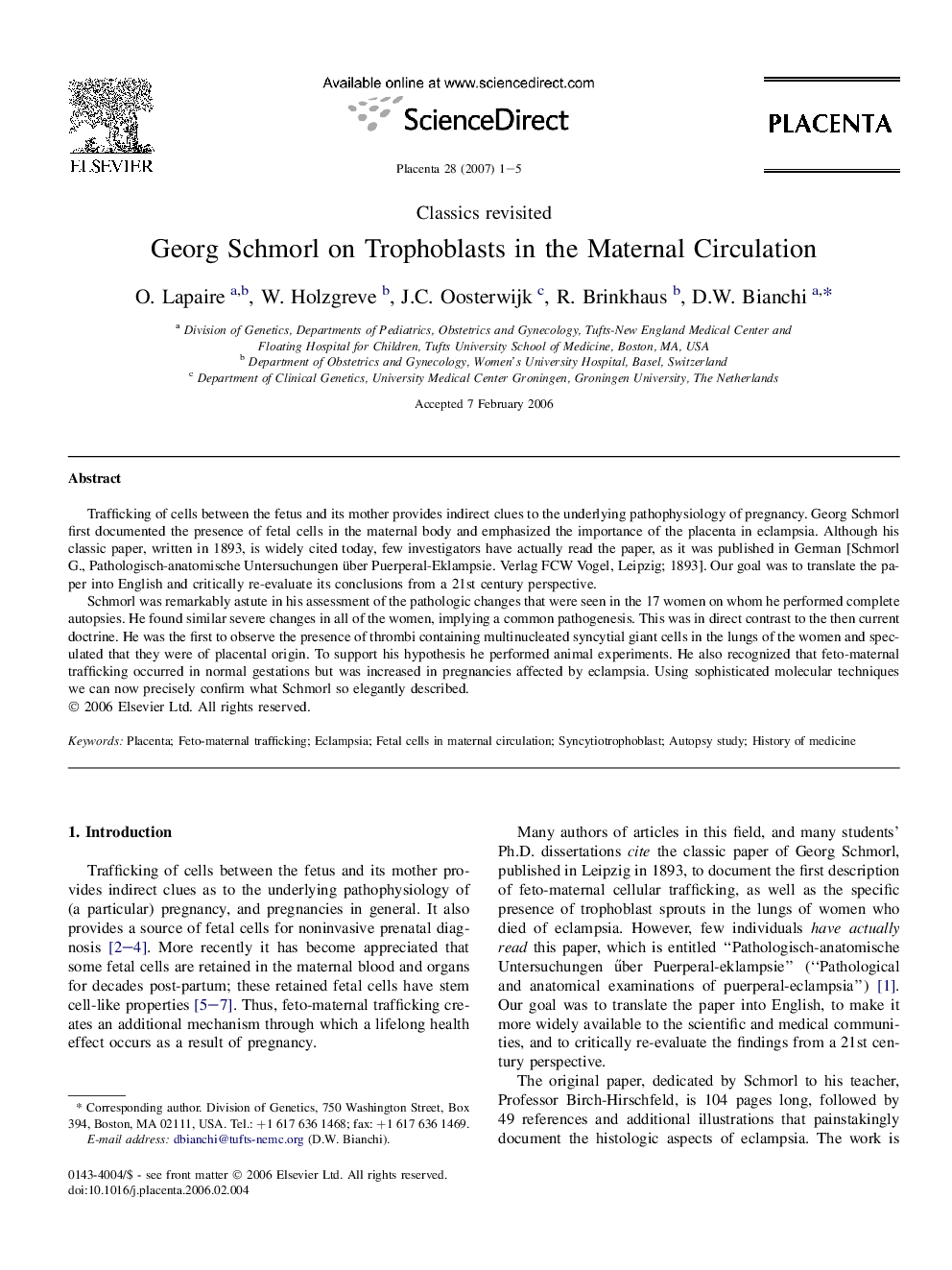| Article ID | Journal | Published Year | Pages | File Type |
|---|---|---|---|---|
| 2790198 | Placenta | 2007 | 5 Pages |
Trafficking of cells between the fetus and its mother provides indirect clues to the underlying pathophysiology of pregnancy. Georg Schmorl first documented the presence of fetal cells in the maternal body and emphasized the importance of the placenta in eclampsia. Although his classic paper, written in 1893, is widely cited today, few investigators have actually read the paper, as it was published in German [Schmorl G., Pathologisch-anatomische Untersuchungen über Puerperal-Eklampsie. Verlag FCW Vogel, Leipzig; 1893]. Our goal was to translate the paper into English and critically re-evaluate its conclusions from a 21st century perspective.Schmorl was remarkably astute in his assessment of the pathologic changes that were seen in the 17 women on whom he performed complete autopsies. He found similar severe changes in all of the women, implying a common pathogenesis. This was in direct contrast to the then current doctrine. He was the first to observe the presence of thrombi containing multinucleated syncytial giant cells in the lungs of the women and speculated that they were of placental origin. To support his hypothesis he performed animal experiments. He also recognized that feto-maternal trafficking occurred in normal gestations but was increased in pregnancies affected by eclampsia. Using sophisticated molecular techniques we can now precisely confirm what Schmorl so elegantly described.
